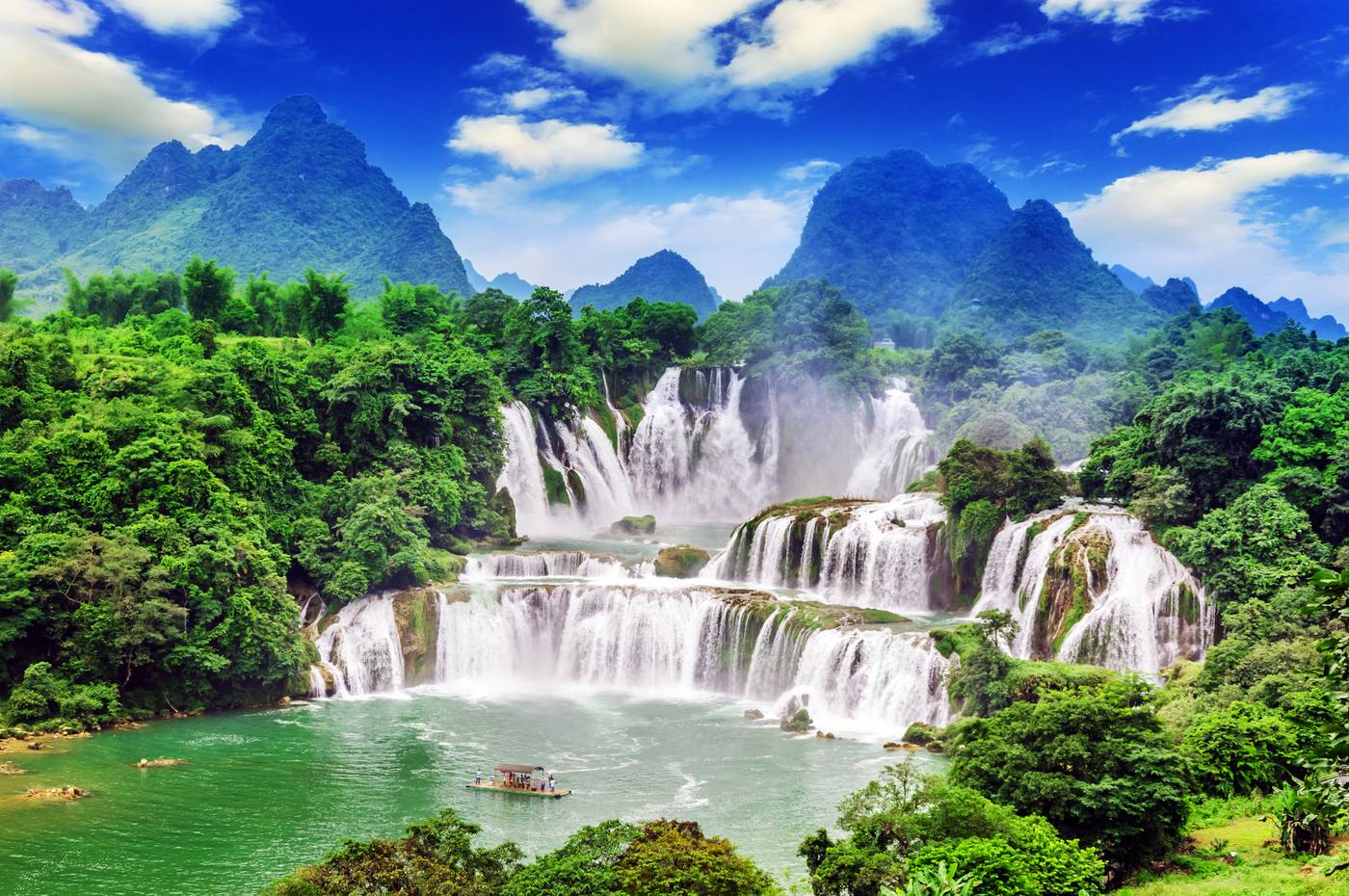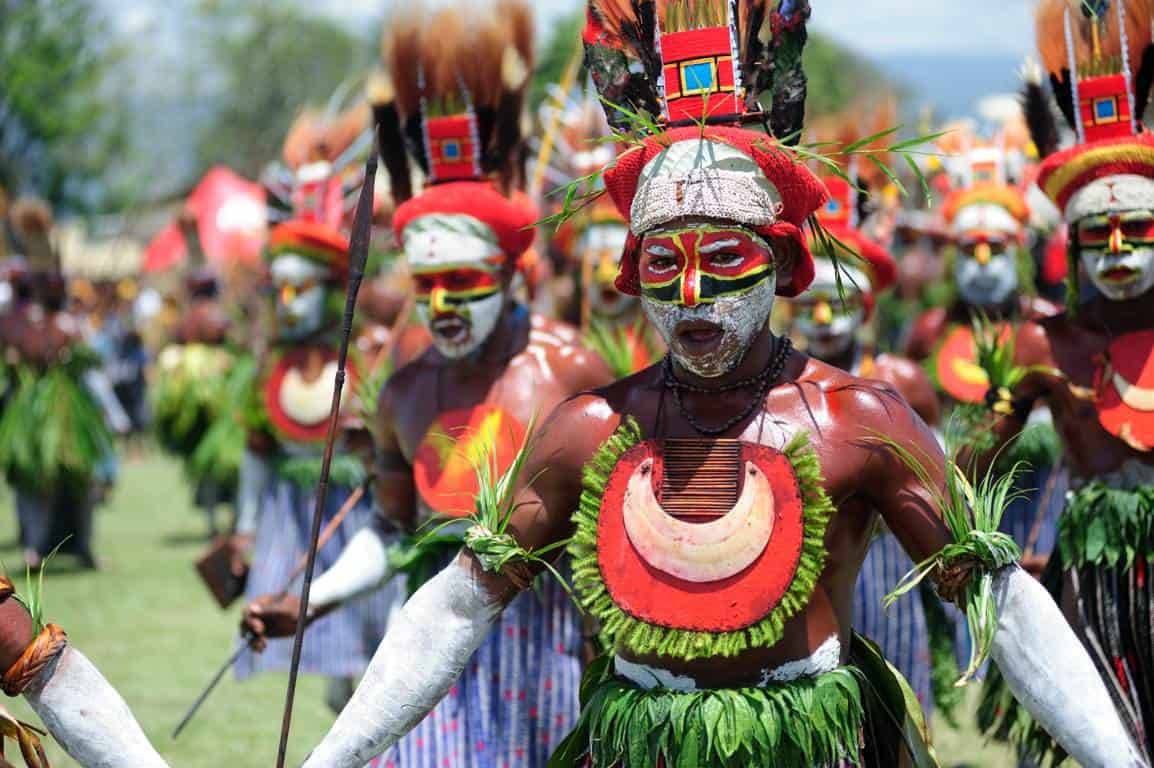
BANDA ISLANDS & SOUTH MALUKU (THE FORGOTTEN ARCHIPELAGO)
Neighbouring Australia in the south, New Guinea in the east and Timor in the west, South Maluku accommodates a diverse natural environment, unique fauna and flora and extremely abundant marine ecosystem. Already the position of these islands indicates the multiple climate zones. Although all Maluku Islands are located in the tropics, every single isle seems to have its own weather forecast.
While the Tanimbar Islands are characteristic of arid and only sparsely vegetated landscapes due to their climate similar to Timor and Australia, the nearby Aru Islands, situated closer to New Guinea, boast tropical greenery and tremendous rainfall. While the northern islands get stormy, the south becomes dry. South Maluku is a place where weather cannot be foreseen.
BANDA ISLANDS
The volcanic archipelago of Banda is often said to be the ‘Pearl of Maluku’. For the precious cloves, nutmeg and mace that grown nowhere else in the planet, Pulau Banda became famous already during the time of colonisation, and the Dutch made it a popular destination for the European traders.
Today, the captivating spices are not anymore what draws the visitors, but the colonial architecture, historic forts, cultural heritage, scenic landscapes, volcanoes and the terrific underwater world are Pulau Banda `s greatest attractions.
The central island is Pulau Neira, with the provincial capital Bandaneira, that has fairly developed tourism infrastructure compared to other Maluku islands. Apart from excellent snorkelling and diving sites, Banda islands are well-known for Gunung Api (660 m) – a perfectly-shaped conical volcano and a popular climbing location.
ESSENTIAL EXPERIENCES ON BANDA ISLANDS
- Bandaneira – search around the capital city to find picturesque colonial buildings, old forts and cannons
- Scuba diving – Banda Islands have very abundant, healthy and undamaged coral system; several diving operators run their business on the islands (the German company Dive Blue Motion is the most reliable)
- Gunung Api (660 m) – climb the highest peak of the Bandas (a full day trip, a local guide essential, bookings in Bandaneira)
- Banda Besar – have a day trip to the largest of Banda Island, visit the historic village of Lonthoir and look for nutmeg plantations
TO GET THERE: slow Pelni ships run from Java/Surabaya and Sulawesi/Macassar to Banda Besar Island. Fast boats operate between Ambon and Banda, as well. Otherwise, you can fly directly from to Pulau Neira Island/Bandaneira Airport.
SOUTH MALUKU
The southernmost Maluku islands are not much used to seeing the foreign visitors. They have always lived in the shadow of their large and wealthy spice-cousins in the north. They are Maluku`s best-kept secret.
Situated closer to New Guinea, Timor and Australia, than Indonesia, the southernmost Maluku offers idyllic beach scenery, typical of uninhabited islets, atolls, sandbars, azure shallows and coral gardens.
Whereas Pulau Wetar, Roma, Damer, Leti Islands, Luang and Tanimbar Islands are almost reaching Timor and Australia, they are arid and barren. On the other hand, the islands, which share the Arafura Sea with New Guinea, boast fertility; Aru Islands, Tayandu Islands and Kai Islands are tropical dreamlands.
KAI ISLANDS
Best accessible of all islands in South Maluku is the Kai Archipelago. Yachters and sailors mostly visit this magnificent chain of islands, islets and atolls. Their virgin nature, pristine beaches and deserted offshore islets are considered some of the least men-touched on Earth.
Dullah-Tual and Langgur Islands are the main ones with good tourism infrastructure and an airport. These twin islands are linked with a bridge, and it is easy to get around by scooter.
There are numerous sandbars, and the best way to explore them is island hopping. The most photographed is probably the Ngur Tavur Beach in Pulau Warbal.
BEST ISLANDS TO VISIT IN SOUTH MALUKU
- Kai Kecil – epic beaches, springs, caves, coastal villages, offshore island hopping
- Kai Besar – rainforest walking tracks, birdlife spotting, marvellous beaches
- Tanimbar Kei – traditional villages, waterfalls, jungle trekking, secluded beaches
- Ngur Tavur Beach – a sand strip on a marvellous desert island
- Adranan Island – camping on a secluded beach is a great experience
- Bair Island – jumping off the cliff into crystal-clear aquamarine water is the highlight!
- Tayando Islands – the main islands offer brilliant snorkelling, and plentiful uninhabited dream islands are to be found around
TO GET THERE: sail independently around the South Maluku Islands or fly directly to Langgur/Kai Islands.
USEFUL TRAVEL TIPS
Religion – Maluku is partially a Muslim region and conservative dress are expected at all times, especially women. Many female travellers reported case when they felt extremely uncomfortable at some places, e.g. tried to be touched by the locals due to their skin colour or bright hair, been subject to loud mockery for their “lack of clothing” and so forth. Be aware of the fact that many residents might have never seen a person of a Caucasian race or a person wearing “Western clothes”.
Health – There is a high risk of Malaria in Maluku, particularly during the rainy season (May-Aug). Vaccinations such as Hepatitis A, B and Tetanus are recommended. Some countries require the Yellow Fever Immunisation (check up on your national health policies).
Transport – To get around the Maluku Islands you will need to use the local boat ferries that are fairly cheap. It is necessary to use boats not only between the islands but also between the towns within islands as the road network is very poor here. Locally, the best means of transport are bemos, ojeks or becaks.
WHEN TO TRAVEL
It is very difficult to estimate the weather in Maluku. The South Maluku Islands often get strong winds from December to February which makes it hard for snorkelers and scuba divers. The wet season generally runs between December and February and it rains abundantly in these months.
Overly, it seems like the ideal time to visit Maluku is the shoulder season (April-May and Oct-Nov)
HOW TO GET THERE
Fly to Jakarta from where you can catch a domestic flight or take the local Pelni Ship to the desired destination.
For all international flights go to www.momondo.com or www.skyscanner.com
For all domestic Indonesian flights check out www.garuda-indonesia.com





















